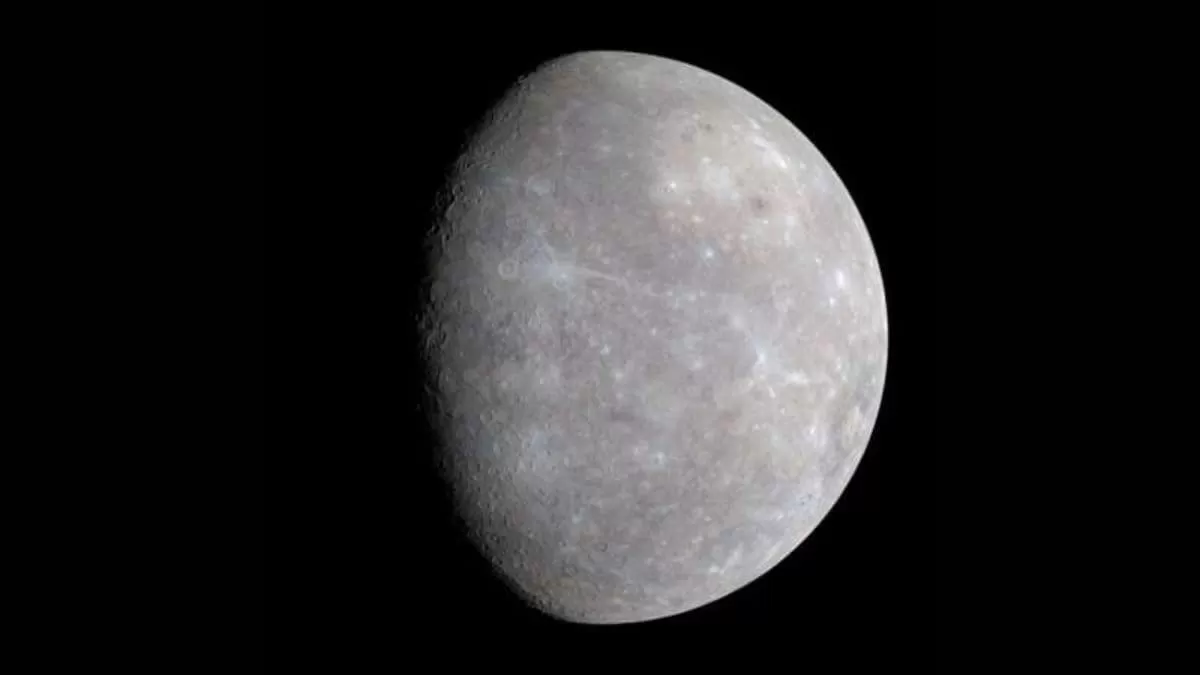In a major breakthrough, scientists have made a groundbreaking discovery on Mercury that is set to reshape our understanding of the planet’s surface chemistry. For the first time, lithium has been detected in Mercury’s exosphere, providing key insights into the volatile element delivery on the planet.
This groundbreaking discovery was made by analyzing magnetic wave signatures found in data from NASA’s MESSENGER spacecraft. The findings indicate that lithium is released into Mercury’s exosphere through meteoroid impacts that vaporize planetary material.
Mercury, the smallest and closest planet to the Sun, has long been a mystery to scientists. Its close proximity to the Sun, harsh and extreme environment, and sparse atmosphere have made it a difficult planet to study. However, the MESSENGER spacecraft, which orbited Mercury from 2011 to 2015, has provided invaluable data and insight into the planet’s composition and dynamics.
The discovery of lithium in Mercury’s exosphere is significant because it was previously thought that the planet would not have enough of the volatile element to release into its atmosphere. Lithium is known to be a volatile element, meaning it has a low boiling point and is easily vaporized. This is why it is commonly found in the atmospheres of gas giants like Jupiter and Saturn. However, the lack of a substantial atmosphere on Mercury made scientists believe that it would not have enough lithium to release into its exosphere.
But with this new discovery, it is evident that lithium is present on Mercury’s surface and can be released into its exosphere through meteoroid impacts. This not only provides a new understanding of the planet’s chemistry but also opens up possibilities for further research on the role of meteoroid impacts in shaping Mercury’s surface.
The presence of lithium on Mercury also has implications for our understanding of the volatile element’s distribution in our solar system. It is believed that the building blocks of planets were distributed throughout the solar system during its formation, and this discovery suggests that Mercury may have received a significant amount of lithium during this process. This can help scientists piece together the puzzle of how the planets in our solar system formed and evolved.
Moreover, this discovery has broader implications for our understanding of exoplanets. Exoplanets are planets beyond our solar system, and scientists have been actively looking for traces of volatile elements like lithium on these planets. With this new discovery on Mercury, scientists can use magnetic wave signatures to detect lithium on exoplanets and gain a better understanding of their surface chemistry.
The detection of lithium on Mercury also has implications for the future of space exploration. As we continue to explore and study other planets and celestial bodies, this discovery highlights the importance of using advanced technologies and techniques to collect and analyze data. The MESSENGER spacecraft’s instruments, including its Magnetometer, played a crucial role in detecting lithium on Mercury’s exosphere.
In conclusion, the detection of lithium on Mercury’s exosphere using magnetic wave signatures from the MESSENGER spacecraft data is a groundbreaking achievement that reshapes our understanding of the planet’s surface chemistry. This discovery not only provides new insights into volatile element delivery on Mercury, but also has implications for our understanding of our solar system and beyond. As we continue to push the boundaries of space exploration, we can look forward to more exciting discoveries that will inspire and challenge our understanding of the universe.

